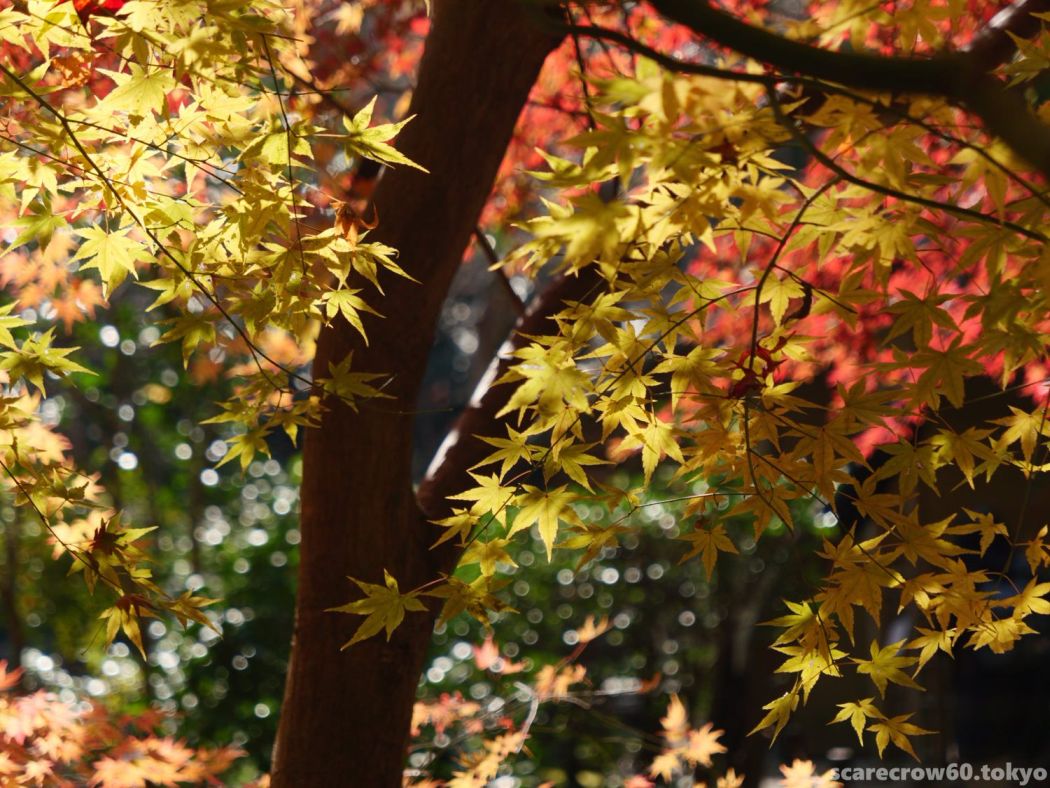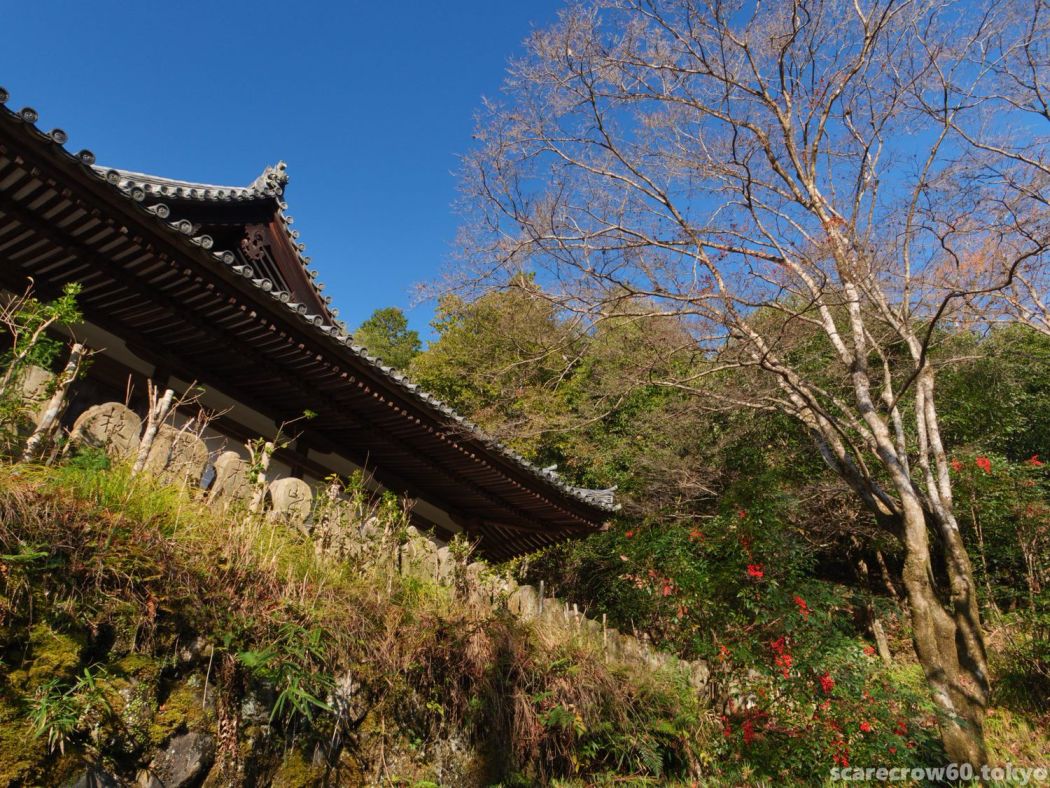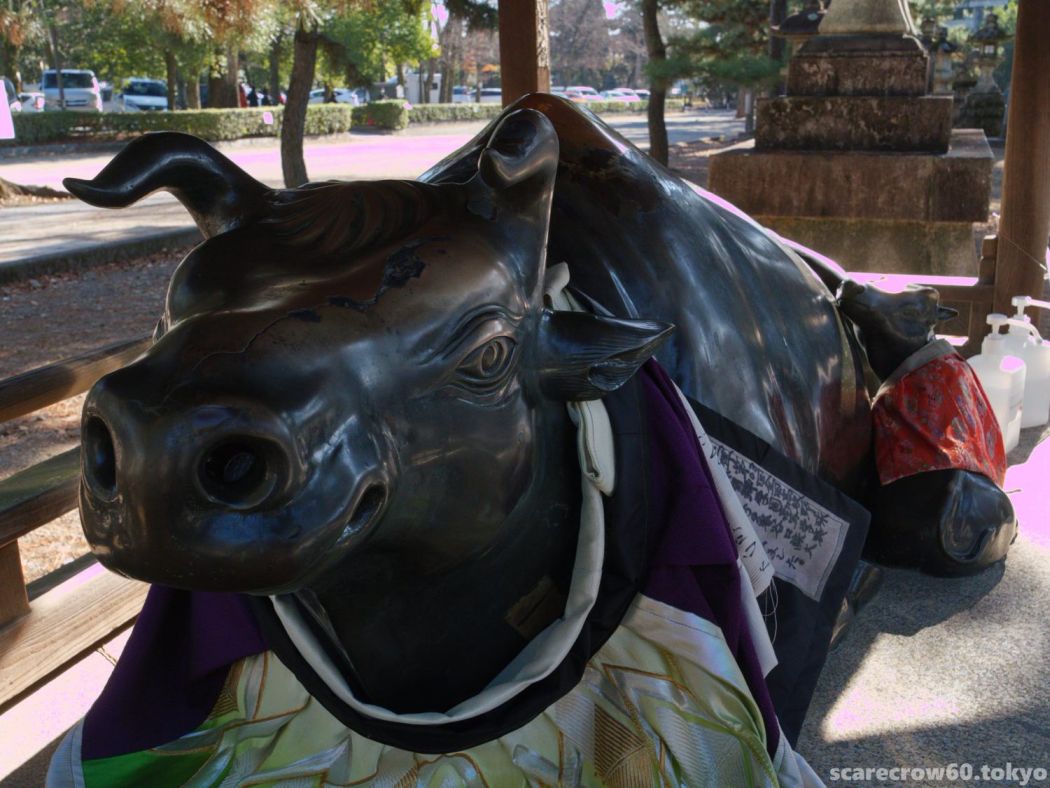- This is Gioji Temple is famous for being the setting of the “Let’s go to Kyoto” Japan Rail tourism campaign in the fall of 1994 and the summer of 2021. It is known for garden of maple trees and moss, which is beautiful in autumn and early summer.
I have not been able to visit here because it is a bit far from any major railroad stations of Kyoto. In early December, off-season for neither autumn leaves nor new leaves, I thought it might be interesting to visit the less popular Gioji and take pictures to my heart’s content without worrying about the crowds.
I was surprised when I got there.
I’m sorry I underestimated the beauty of the maple trees at Gioji in early December, when the leaves were still in their final stages of fall color. It really took my breath away.
Let’s go back in time to the entrance of the temple. It was December, and there were almost no visitors.
Pine needles and red berries caught my eye in the hedge.
Winter withered branches and blue sky beyond the thatched gate.
It’s beautiful in a wintery way, and it’s nice to be out of season, I was still calmly thinking that at the time.
And when I entered the garden, what do you think of this lush moss garden?
Seriously. This stunning blue is amazing. I’m not even going to pause to admire how they can keep a garden like this in this season…
The side of the bamboo grove is this feast of red and yellow.
What the heck is this?
It’s December. Isn’t this yard the only one on the wrong calendar?
No, it’s not a mistake, both moss and maple seem to be healthy even in December here.
I took a deep breath, closed my eyes, and calmly checked the view, but it was definitely the same view both inside and outside the viewfinder.
I learned that you can enjoy the height of fall at Gioji until early December. How horribly spectacular the view would have been if we had been here ten days earlier. Of course, the crowds would have been terrific then, too.
Leaving the temple, I took a walk in Sagano while heading in the direction of Arashiyama station.
Beyond the ears of silver grass, the thatched roof of thatched hut.
A view of the front of the Rakushisha thatched hut, borrowing the figure of the children running energetically.
This is an early winter scene of Mt. Ogura, where Tadahira Fujiwara (Lord Sadanobu) composed the poem, “If the leaves on the peaks have hearts, they will not fall.” I had taken pictures from here before in early summer, but it is fun to see it differently in different seasons.
I wanted to avoid the crowds, but that was not possible as we approached Arashiyama. From this point, the number of people rapidly increased, and I could no longer take my time to take pictures. This area of the bamboo grove is the limit for taking pictures slowly.
After this, I crossed the railroad and there was already a wave of people. It was difficult to take pictures calmly, and even if I forced myself to take pictures, I could not avoid capturing the unintended expressions and eyes of people.
The majority of people passing by are still Japanese. However, I can manage to hear Chinese, Korean, English, and even Thai, and there are many others who speak languages I do not know. The increase in the number of visitors is probably very welcome for the tourism industry, but it is going to cause a lot of problems in terms of photography.
My camera became useless on the way to Arashiyama station.
So, the goal of the Sagano walk is a view of the Randen train coming in, one step away from the previous bamboo grove.
So, after walking for about 2-3 hours from Okusaga, which was sparsely populated, we wandered down to Arashiyama, which was so crowded that it could have been mistaken for Shibuya Tokyo.
After this, we will take the Randen train to Kitano Hakubai-cho and visit Tenmangu Shrine in the next issue.



